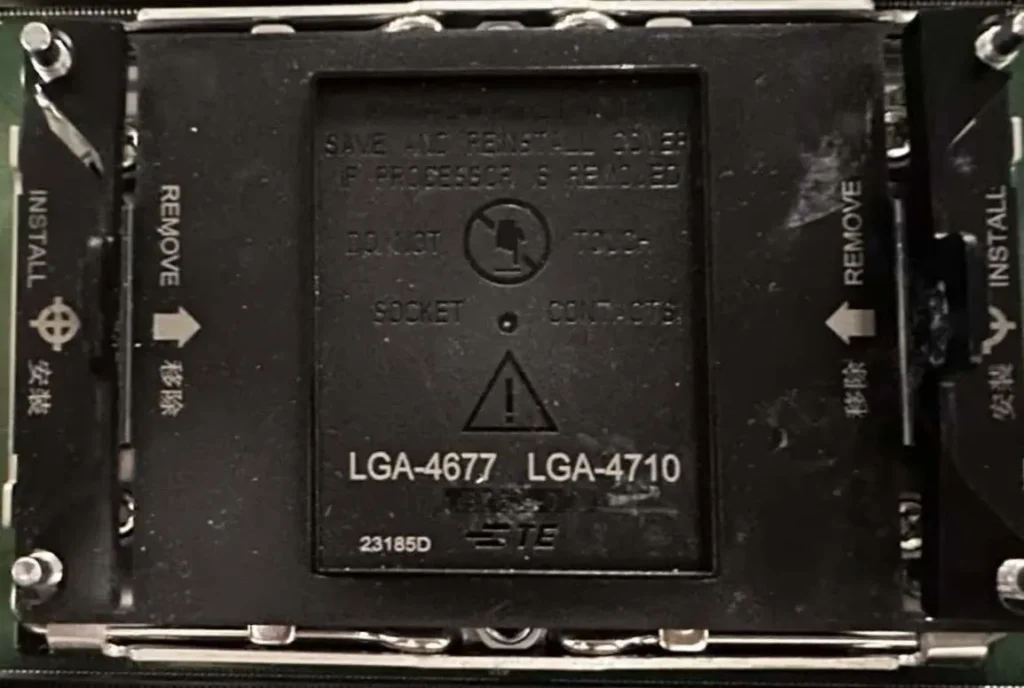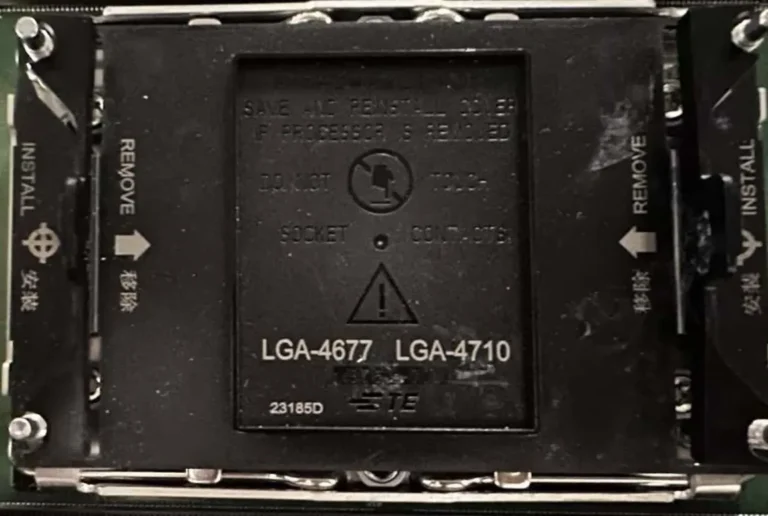It is possible that Intel is creating a new socket for the server market.
A well-known hardware leaker by the name of @Yuuki_Ans has spread the word about an image of an unidentified socket that is most likely intended for CPUs manufactured by Intel. The socket in question is known as LGA4710, and it may be meant for special-use processors manufactured by Intel or for special-purpose system-on-chip designs that are not currently on the roadmap.
Some of the photos that have been made public show a socket with the designations ‘LGA4710-2’ and ‘LGA-4677 LGA-4710.’ This particular socket was created by Lotes, a prominent manufacturer of CPU sockets and other connectors.
Additionally, the LGA4677 package is utilized by contemporary Intel 4th Generation Xeon Scalable ‘Sapphire Rapids’ processors, and the LGA4677 package will continue to be utilized by 5th Generation Xeon Scalable ‘Emerald Rapids’ central processing units. During this time, the LGA7529 socket will be utilized by the 6th Generation Xeon Scalable ‘Granite Rapids’ processors. These processors will feature the same 144-core Sierra Forest counterparts that are designed for cloud data centers. Because of this, it is not obvious what the LGA4710 package is intended to be used for.
Since the LGA4710 socket is identical to the LGA4677 socket in terms of its physical characteristics, the question that may be most pertinent is why Intel would build a new socket for a new CPU form factor that is intended to be used for the same applications as the processors that are now in use. Although we are not exactly in the business of making educated estimates, we are able to offer a few alternatives for the LGA4710 box that Intel use.

New sockets are typically manufactured in order to facilitate the installation of new CPUs that have distinct power and connectivity requirements. Therefore, LGA4710 can simply enable increased thermal design power or the provision of other connectivity features, such as a more recent version of PCIe or CXL connectors. Because the new processor form factor is physically identical to that of Intel’s LGA4677 and because it is possible to install an LGA4677 processor into a 4710-pin socket and vice versa, the power needs of LGA4710 processors should not be too different from one another. If they are, chips could be destroyed.
Intel sells a boatload of data center and workstation products, so it may use the LGA4710 form factor for a next-generation workstation or special-purpose server system-on-chips, CPUs, FPGAs, or even GPUs. An attentive reader has probably noticed by now that we purportedly avoided denoting products that have an LGA4710 form factor as a central processing unit (CPU). This is for a reason. As an illustration, the business is collaborating with Ericsson to develop specialized chips for use in RAN applications. In addition, Intel is responsible for the production of bespoke CPUs for Meta’s Facebook, which operates enormous data centers that together cost almost one billion dollars.
As of right present, it is difficult to determine what LGA4710 is. Although there is a great number of alternatives, we are going to presume that the answer is going to be relatively straightforward.

